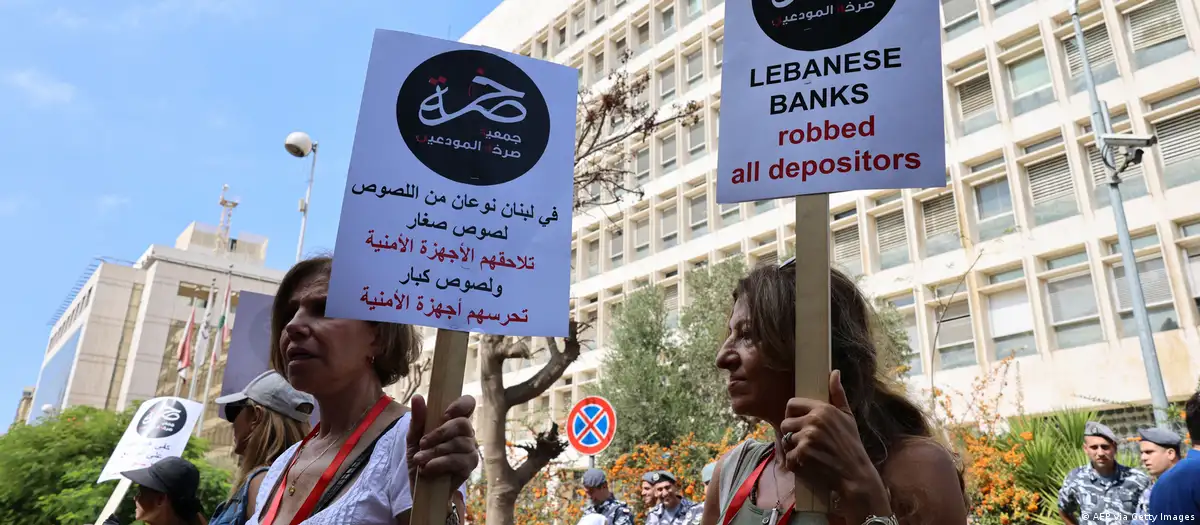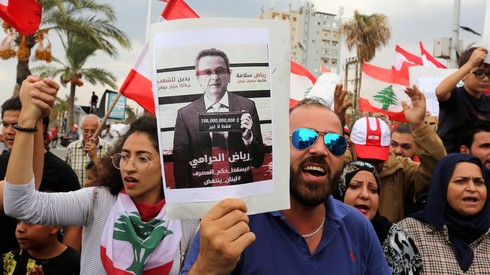The 30-year tenure of the former governor of the Bank of Lebanon Riad Salameh culminated in controversy, inquiries and sanctions. What role did the once-respected financial authority play in Lebanon’s economic collapse?

Before the start of the economic crisis in Lebanon in 2019, the governor of the country’s central bank, Riad Salameh, had a strong reputation as one of the world’s best.
But by the end of his mandate at the Banque de Liban (BDL) on July 31, he was being described as one of the worst central bank chiefs in the world. He is now the subject of financial crime investigations in six European countries and Lebanon and is a wanted man by Interpol. The United States, the UK, and Canada have imposed sanctions on him.
Salameh’s monetary policies, along with government corruption and mismanagement, are said to have led to a crisis marked by falling growth, currency devaluation, banking sector collapse, and widespread poverty.
In 2016, Salameh launched a financial engineering scheme that weakened the banking sector, fueling extensive public debt and had a negative impact on the population.
Salameh’s personal wealth probed
But Salameh not only facilitated funds to the government for its reckless expenses in an import-reliant country with low productivity. He also allegedly benefited himself, as revealed by investigations in Lebanon and abroad.
Though Salameh has consistently denied any wrongdoing, he and four associates are alleged to have transferred about $330 million (€303 million) from the central bank of Lebanon to Europe between 2002 and 2015. These public funds were purportedly used for purchasing luxury real estate and assets in Europe.
The investigations led France and Germany to seize his assets and call for an Interpol arrest warrant. After Lebanon rejected extradition citing domestic law, the US, the UK, and Canada imposed sanctions, leading the government in Beirut to freeze Salameh’s assets in the country.
A corrupt system
Salameh represents only the tip of the iceberg of a highly intricate network that has governed the country for decades.
“I compare Salameh to Meyer Lansky,” Roy Badaro, a Lebanese economist, told DW, referring to the American mafia figure known as the “Mob’s Accountant.”
“Salameh was part of the corruption ring in Lebanese politics, utilizing it for personal gain through embezzlement of public funds,” he said.
Lebanon’s central bank lacked transparency, as highlighted in the long-awaited report by Alvarez & Marsal (A&M), a global professional services firm commissioned by the ministry of finance. The report also emphasized an abnormal concentration of power in the hands of the BDL governor and lack of proper controls over it, unconventional accounting methods to mask negative outcomes, and the inflation of assets and profits while reducing losses.
Sami Nader, director of the Levant Institute for Strategic Affairs, told DW that there were no checks and balances and no governance system inside the central bank.
“Within the BDL, institutional organs are staffed by government-appointed individuals, operating within a sectarian system led by leaders who emerged from the civil war and inherited this structure,” he said.
Multiple reports have confirmed the connection between the ruling class and the banking system.
Lebanese paid the highest price
As a result, misconduct and corruption in the BDL benefited only a few and burdened the population.
“Thousands of professionals and private sector workers entrusted their savings and sometimes entire retirement funds to local banks. But middle-class people have now plummeted into poverty, with retirees unable to afford medication or secure their old-age needs, and forced out of retirement to secure basic necessities,” Farhat Farhat, economist and co-founder of Lebanon’s Depositors Union, told DW.
When asked what interim BDL governor Wassim Mansouri could now do to combat corruption within the central bank, Nader said: “Corruption cannot be stopped due to the prevailing system. The interim governor stated he won’t lend money unless there is a law.”
“Mansouri now seems to wait for the system to create the law and maintain flawed policies. This underscores the lack of change,” he said.
Economist Badaro argued that repealing the banking secrecy law would be a valuable approach to combat corruption as it has encouraged nontransparent behavior.
“We don’t need banking secrecy anymore. To address corruption, we must eliminate impunity. For the reconstruction of Lebanon, accountability is essential,” he said.
The BDL has a crucial role in meeting Lebanon’s requirements for securing a $3-billion aid package from the International Monetary Fund, a staff-level agreement reached in 2022.
However, Farhat thinks Lebanon doesn’t necessarily need IMF assistance but rather independent, reputable decision-makers making economic and financial decisions.
Meanwhile, the BDL is planning various reforms such as capital control and financial restructuring. Yet, their approval rests with a parliament stuck with selecting Lebanon’s next president.
DW

Leave a Reply
You must be logged in to post a comment.